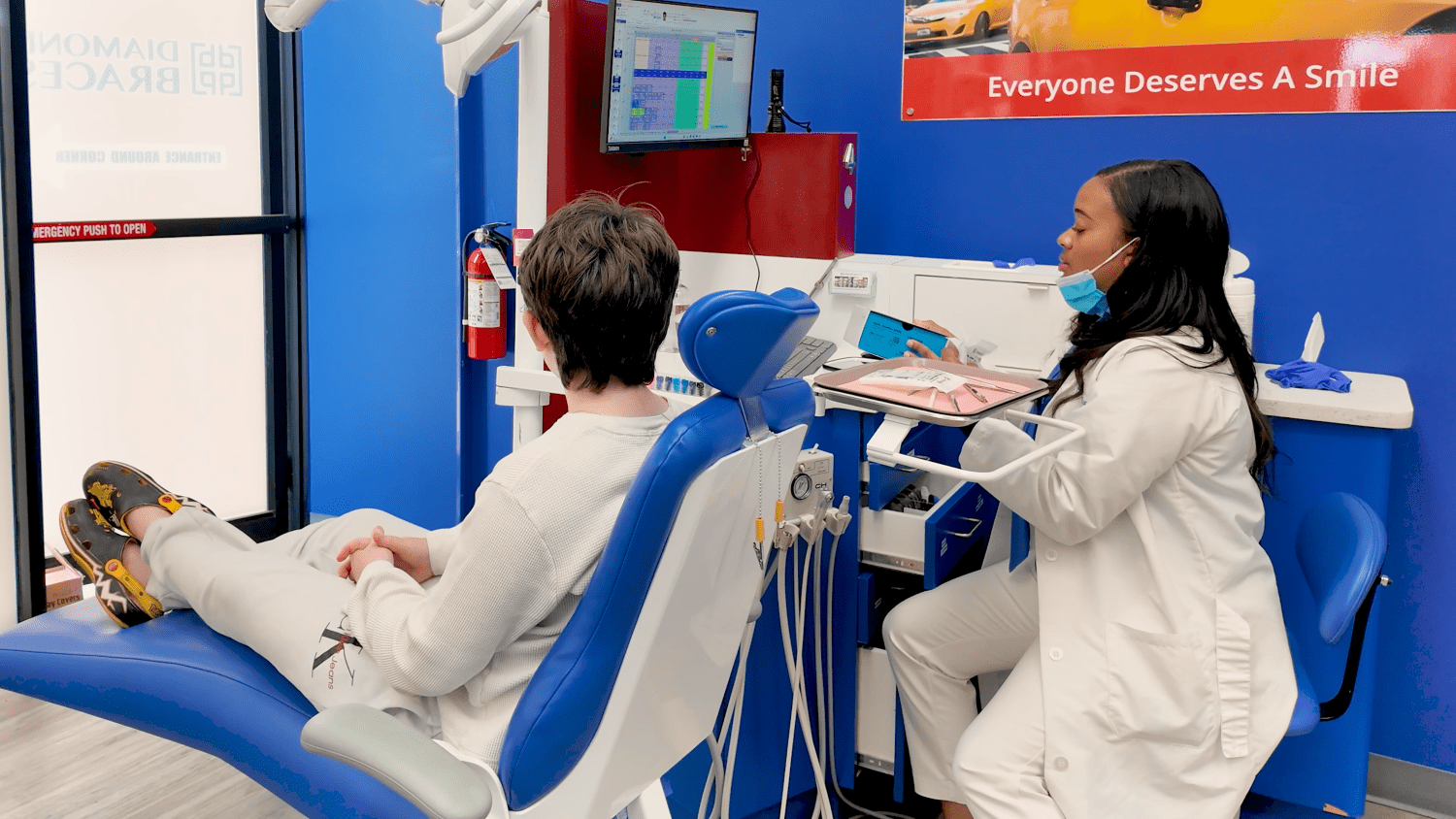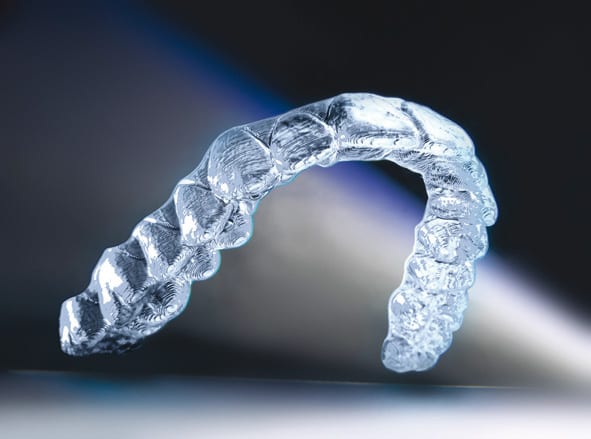Orthodontic treatment is a significant investment—both in time and in improving long-term dental health. Yet even after braces come off, your teeth remain susceptible to change. Without consistent aftercare, they can gradually shift out of alignment, a process known as orthodontic relapse.
Table of contents
Can teeth return after braces?
This is more common than many expect, and if left unchecked, it can diminish the results you worked hard to achieve. The good news? By understanding why relapse happens and taking simple preventive steps, you can protect your smile and preserve the alignment you gained through treatment.
Orthodontic Relapse Explained
Teeth can shift after braces for many reasons. Everyday forces—such as chewing—apply continual pressure to teeth, which can cause gradual movement. Additional risk factors include bruxism (teeth grinding), weakening gum tissues, aging, and inherited traits. However, the most common and controllable cause of relapse is failing to wear a retainer as prescribed.
Retainers help teeth maintain their corrected positions while surrounding bone and gum tissues stabilize. Attempting to force an old or ill-fitting retainer back into place after noticeable shifting can cause discomfort and additional alignment issues. If relapse has occurred, always consult your orthodontist for proper guidance and next steps.
Key contributors to orthodontic relapse include:
External pressures from everyday chewing forces
Bruxism, or nighttime teeth grinding and clenching
Gum weakening and changes in soft tissue
Skipping or inconsistent retainer wear
How long does it take for your teeth to relapse?
Teeth shift after getting braces
Teeth can begin to shift almost immediately after braces are removed if a retainer is not worn consistently. The first three to six months post-treatment are critical, as the bone and gum tissues are still adapting to the teeth’s new positions.
Without retainer wear, visible relapse can occur within weeks or months. Research shows that approximately 20% of orthodontic patients experience some relapse within three years.
Long-term, consistent retainer wear remains the most effective strategy for protecting your results and preventing unwanted movement.

The importantance of retainers after braces
Retainers are essential for preserving the outcome of orthodontic treatment. They are designed to hold teeth in their ideal positions—not to move them like braces. Immediately after braces are removed, most patients are advised to wear their retainer full-time, gradually transitioning to nighttime-only wear for life.
Minor shifts can sometimes be corrected with a properly fitted retainer, but it cannot reverse significant relapse. Forcing an old retainer over shifted teeth may cause damage or discomfort. When in doubt, consult your orthodontist to explore safe options for correction.

How to manage teeth shifting back
Managing orthodontic relapse begins with identifying its cause and extent. Minor shifts can often be addressed through diligent retainer wear. More pronounced relapse may require retreatment, either with clear aligners or braces. Today’s orthodontic solutions make it possible to correct relapse comfortably and discreetly. Aligners like Invisalign or Smilify are excellent options for adults seeking subtle, efficient correction. The key is to intervene early—before relapse becomes more severe and requires longer treatment.
Orthodontic retreatment
Orthodontic retreatment refers to re-aligning teeth that have drifted out of position after initial treatment. If you notice your teeth shifting, your bite becoming uncomfortable, or aesthetic changes, schedule a consultation with your orthodontist. Clear aligners can often correct mild to moderate relapse in less time than traditional braces. In more severe cases, a combination of treatment approaches may be needed. Prompt intervention helps maintain function, comfort, and a healthy appearance.
Can retainers fix orthodontic relapse?
In mild cases, retainers can effectively reposition slightly shifted teeth if they are caught early. However, they are not intended to correct significant movement. If your teeth have moved substantially, aligners are usually recommended because they apply controlled, gradual force to reposition teeth safely and predictably. Clear aligners offer a convenient and discreet alternative to traditional retreatment methods, helping patients regain alignment with minimal disruption to their daily lives.

Maintaining oral hygiene
The 3-3-3 rule for teeth
Long-term dental health depends not only on appliances like retainers but also on excellent oral hygiene. The “3-3-3 rule” refers to brushing your teeth for three minutes, three times a day, and visiting the dentist every three months for professional cleanings—though twice-yearly cleanings are more common today.
This level of care helps keep gum tissues and supporting structures healthy, which in turn stabilizes tooth alignment. Good oral hygiene is a powerful ally in reducing the risk of relapse.
The 2-2-2 rule for teeth
Another useful guideline is the “2-2-2 rule”: brush your teeth at least two times a day, floss two times a day, and visit your dentist at least two times a year.
Strong oral hygiene supports gum and bone health, both of which are critical to maintaining tooth stability after orthodontic treatment. Combined with consistent retainer use, these daily habits help preserve the results of braces or aligners while reducing the risk of decay and periodontal disease.
Preventing orthodontic relapse
How should my smile look after braces?
A healthy post-braces smile should reflect balanced alignment, proper bite function, and comfortable occlusion. Preventing relapse requires maintaining this result over time. This involves wearing your retainer exactly as instructed, keeping up with dental check-ups, and addressing any issues (such as bruxism) that could exert pressure on your teeth. Proactive care now will save you from future complications and preserve your confident smile for life.
Top tips for minimizing relapse risk:
- Wear your retainer nightly as instructed by your orthodontist
- Attend regular dental and orthodontic check-ups
- Protect teeth from trauma with mouthguards during sports
- Address bruxism or grinding with professional guidance
- Maintain excellent oral hygiene to support gum and bone health
What is the success rate of orthodontic treatment?
Orthodontic treatment has a very high success rate when patients follow their orthodontist’s recommendations. Relapse is preventable in most cases through proper retainer wear and maintenance of overall oral health. With today’s advanced treatment options, even if relapse does occur, it can be corrected efficiently. The long-term stability of your smile ultimately depends on your commitment to post-treatment care and regular follow-ups with your dental team.
Factors affecting retention and relapse in orthodontics
A variety of natural and lifestyle factors influence tooth stability after orthodontic treatment. While some changes—such as those related to aging or genetics—are unavoidable, most relapse risks can be managed with consistent habits and preventive care. Recognizing the factors that drive relapse enables patients to take an active role in maintaining their alignment and oral health for the long term.
Factors that commonly contribute to relapse include:
- Skipping or inconsistent retainer wear
- Natural aging and shifting of jawbone and gum tissue
- Undiagnosed or untreated bruxism (teeth grinding)
- Lifestyle habits that exert pressure on teeth (chewing on hard objects, mouth breathing, etc.)
Managing orthodontic relapse
When orthodontic relapse occurs, your orthodontist will evaluate the extent of movement and recommend the appropriate treatment path. Mild cases may respond well to renewed retainer use. More significant shifts often require targeted retreatment with clear aligners or braces.
Thanks to advancements in orthodontic technology, correcting relapse today is typically faster, more comfortable, and more discreet than traditional full treatment. Early intervention is key to maintaining long-term stability and protecting your investment in a healthy smile.
Orthodontic Retreatment
Not every relapse warrants retreatment. Minor crowding or aesthetic concerns can sometimes be addressed by adjusting or updating your retainer. However, if you experience functional problems with your bite, jaw pain, discomfort during chewing, or changes that affect your confidence, it is wise to consult your orthodontist. Addressing relapse promptly ensures that your alignment is preserved and that more extensive corrections are avoided in the future.
Signs that retreatment may be needed:
Noticeable shifting or crowding of teeth
Bite no longer feels comfortable or aligned
Increased jaw discomfort or pain during chewing
Changes in tooth spacing or appearance that affect confidence)
Can Invisalign fix the relapse?
Clear aligners like Invisalign or Smilify are excellent tools for correcting mild to moderate orthodontic relapse. They apply controlled, gradual force to move teeth back into proper alignment—all with minimal visibility and maximum comfort. For more advanced cases, traditional braces or lingual braces may be required. Your orthodontist will design a personalized treatment plan that reflects your goals, dental history, and lifestyle needs, ensuring you achieve the best possible result.
Common orthodontic retreatment options include:
Custom clear aligners for mild to moderate relapse
Traditional braces for more significant corrections
Lingual braces for discreet behind-the-teeth treatment
New retainers to stabilize teeth after minor adjustments
How to avoid relapse of teeth after braces?
The most effective way to avoid orthodontic relapse is by wearing your retainer exactly as prescribed by your orthodontist. Teeth naturally take time to stabilize in their new positions after treatment—typically at least a year or more. Retainers hold your teeth in place during this critical period and beyond, preventing them from drifting. Consistent retainer wear, combined with excellent oral hygiene and regular dental check-ups, is key to preserving your straight smile for the long term.
Why did my teeth relapse after braces?
Orthodontic relapse most often happens when retainers are not worn consistently after treatment. It’s common for patients to stop using their retainers within months of having braces removed—especially once their teeth feel "settled." Unfortunately, this lapse allows natural forces and soft tissue memory to pull teeth back toward their original positions. Without the stabilizing effect of retainers, teeth are likely to shift over time, even if the original treatment was successful.
How do you prevent braces from removing teeth?
Retainers play a crucial role in preventing tooth movement after braces or clear aligners. These custom appliances fit securely over your teeth—either as removable trays or bonded behind the teeth—and help maintain proper alignment. After active orthodontic treatment, retainers ensure your teeth remain in their corrected positions, protecting your bite and smile for the long term.
How to fix teeth relapse?
Mild tooth shifting can often be corrected by having a new, properly fitted retainer made to guide teeth back into alignment. However, if the relapse is more pronounced, retreatment may be needed. Options include clear aligners—such as Invisalign—for discreet, flexible correction, or traditional braces for more complex cases. The good news: correcting relapse typically requires far less time than the original orthodontic treatment, especially when addressed early.
What are the odds of relapse after braces?
Orthodontic relapse is not uncommon, with studies estimating that up to 20% of patients experience some level of relapse within three years after treatment. The first several months post-treatment are particularly critical, as teeth are most prone to shifting during this time. The key to minimizing relapse risk is consistent, long-term retainer wear. The type of retainer recommended will depend on your individual needs, but wearing it as instructed greatly reduces the likelihood of significant tooth movement.
Conclusion
Orthodontic relapse is a natural risk after braces—but it is highly manageable with the right approach. Consistent retainer wear, excellent oral hygiene, and regular dental visits are the cornerstones of long-term success. If relapse occurs, modern treatment options like clear aligners or braces can effectively restore alignment and function. By staying proactive and engaged with your care, you can enjoy the benefits of your orthodontic investment for life. Partner with a trusted orthodontist, and keep your smile healthy, stable, and beautiful for years to come.






